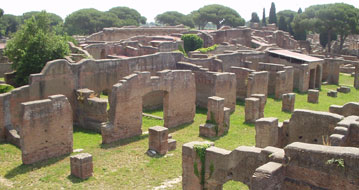Universities seem to mingle and intertwine with their surroundings in different ways. Many older universities concentrate in certain areas and have central buildings but are ultimately integrated to the fabric of the cities where they are located. This is true for example with the Universities of Bologna, Groningen and Helsinki. Some towns ARE basically universities, such as Cambridge or Oxford, that are synonymous with their universities, even if there are other higher education facilities in these cities.
Many universities have separated campuses, either physically in a different location outside urban area, as Keele or Birmingham are. Some of these campuses are engulfed by the city, but separated by a wall, as is “La Sapienza” at Rome. Some newer universities are slotted in different locations and are actually more regional outlets, like the other Cambridge University the Anglia Ruskin with a second campus in Chelmsford. Then, there is the Open University that may engage its students remotely, but has very physical locations at Milton Keynes and different regional centres. Good old-fashioned buildings in brick and mortar.
It is easy to recognize that the main building of the University College London is special and the Cambridge and Oxford colleges represent different modes of college building. In one city the buildings is more open and in the other more fortress-like, but they both are clearly buildings with a certain function, easy to classify apart, even if one was a Martian on one’s first trip on the Earth.
Nevertheless, no matter how much different universities try to move their libraries online, rationalise their collections, introduce cafeteria and retail areas and cut the book spending, a feature that epitomises scholarly research is a library. Even if I have passed there many times, the long, narrow corridors of the University Library at Cambridge still impress me with the sheer number of books and nothing makes you feel more like a real scholar than sitting on one of the chairs in the main reading room of the American Academy in Rome, when the windows are open with the early summer wind blowing through and you are tapping away with your laptop. The same awe of surroundings and the situational appropriateness fills you in the Bodleian Library. This does make a university a mental place, but defined by the physicality of its buildings and surroundings - not to mention its objects.






